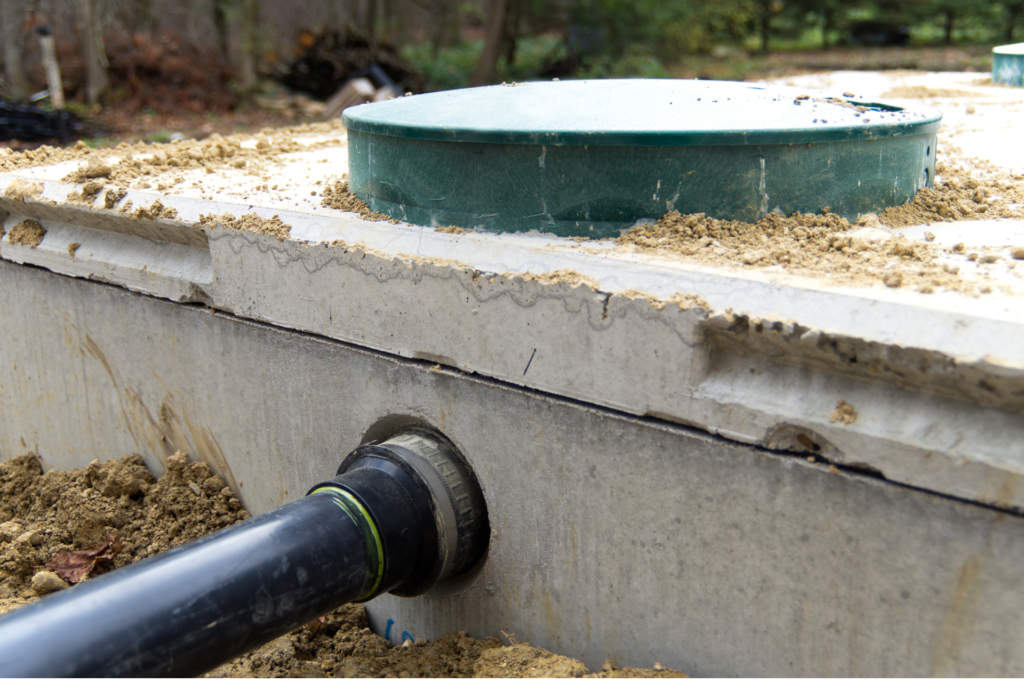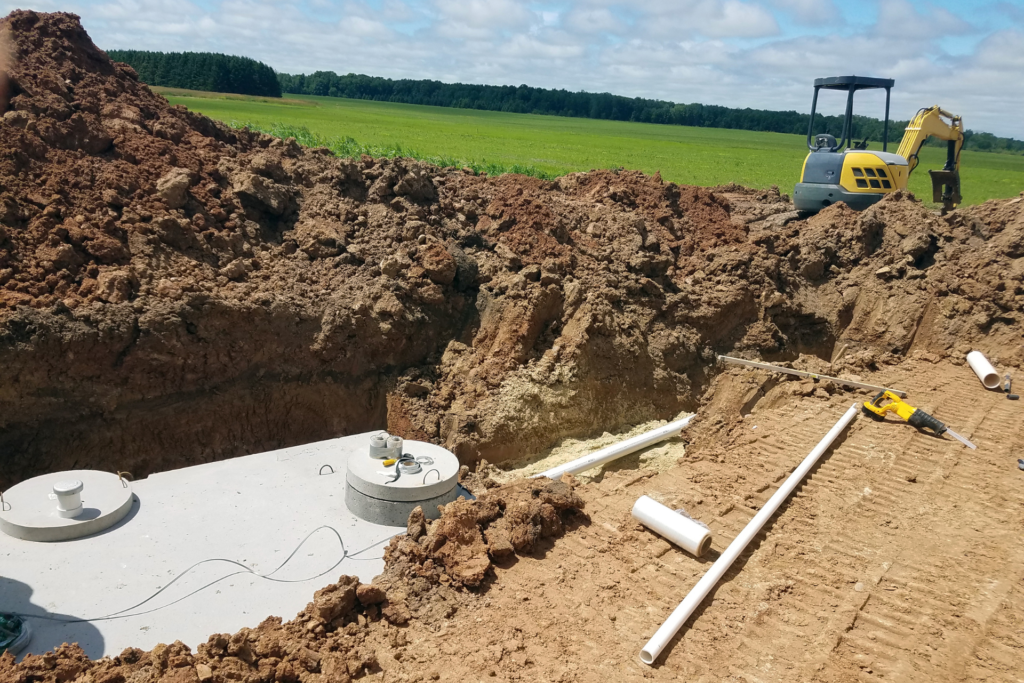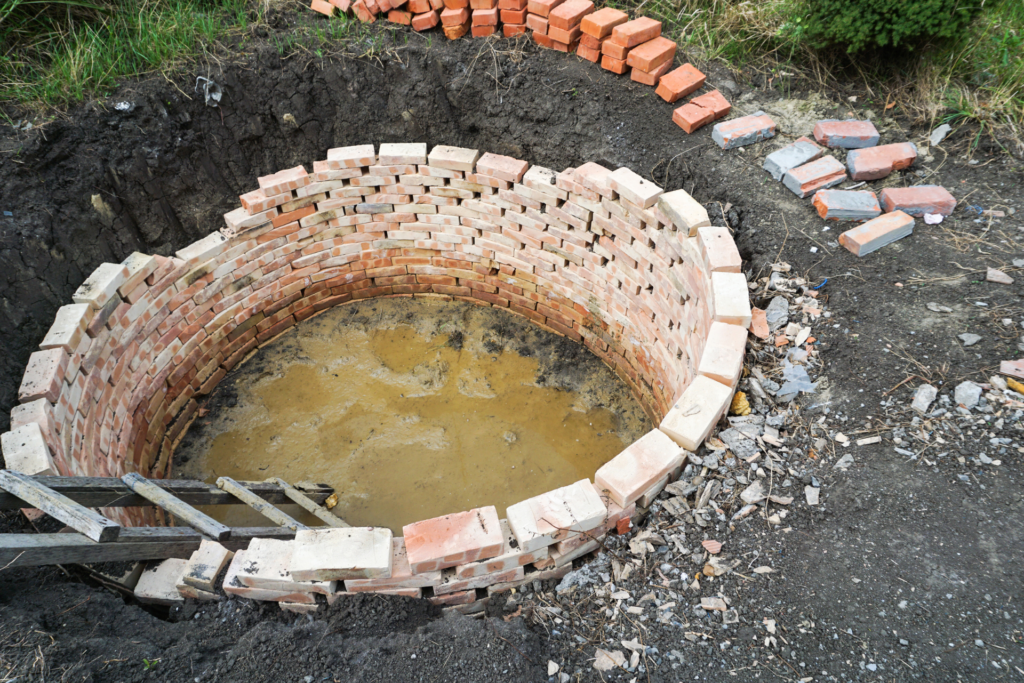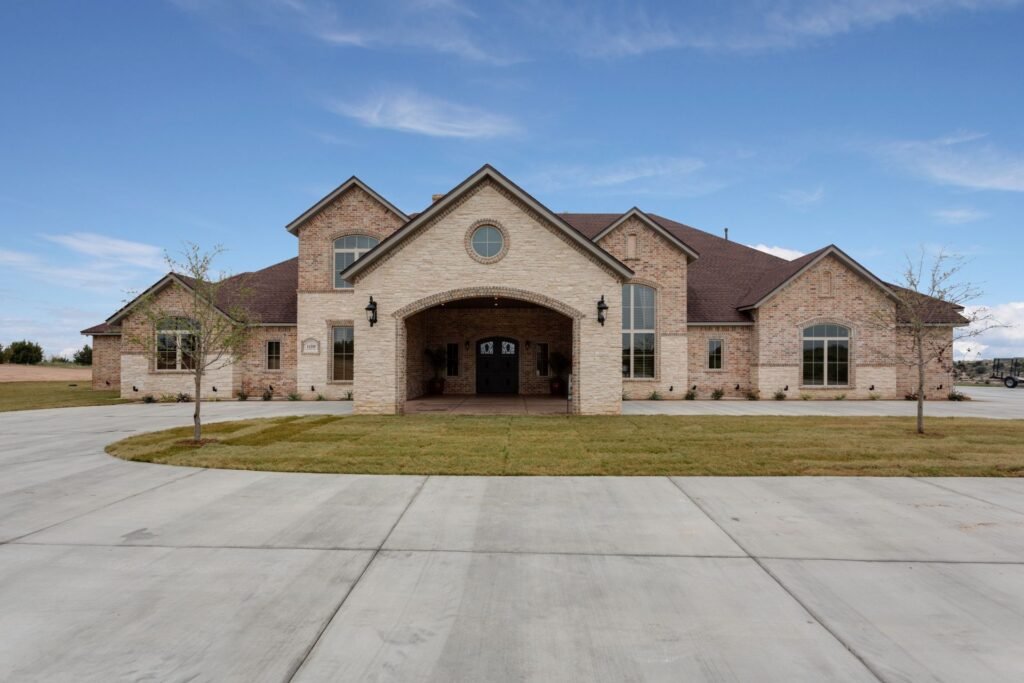Welcome to our comprehensive guide on concrete septic tank prices in New Zealand, where we’ll break down everything you need to know about the costs, installation process, and maintenance tips for choosing the right septic system for your property. Whether you’re building a new home in a rural area or looking to upgrade an existing septic system, understanding the factors that influence pricing and the benefits of concrete tanks is essential for making an informed decision. In this post, we’ll cover the average costs, the factors that impact those prices, and provide insights to help you navigate the process with confidence, ensuring you select the best option for long-term durability and efficiency.
The average cost of a concrete septic tank in New Zealand ranges from $4,000 to $12,000, depending on factors such as tank size, location, installation complexity, and local council regulations. Smaller tanks typically cost less, while larger tanks and those in remote areas may incur higher costs due to delivery and installation fees.
Table of Contents
What Is A Concrete Septic Tank
A concrete septic tank is an essential component of many on-site sewage systems, commonly found in rural or off-grid settings. It is a watertight, underground container made from reinforced concrete that holds wastewater from homes or businesses. These tanks play a crucial role in treating and disposing of sewage by allowing solids to settle at the bottom, where bacteria can break them down. The liquid effluent then moves into a drain field for further filtration. This process helps to prevent untreated sewage from contaminating the environment.
Why Choose Concrete Over Other Materials
Concrete septic tanks are a popular choice for a number of reasons. One of their primary advantages is durability. Concrete is incredibly strong and can withstand the weight of the soil, vehicles, or structures placed above it without cracking. This durability makes it resistant to damage, ensuring it can last for decades with proper maintenance.
In terms of longevity, concrete septic tanks often outlast tanks made from alternative materials like plastic or fiberglass. They don’t degrade as quickly under pressure, and they are less prone to issues like floating in high water tables, which can be a concern with lighter tanks.
Concrete is also seen as an environmentally friendly option. It is made from natural materials, cement, sand, and water that don’t release harmful chemicals into the soil over time. This makes it a safer option for both the environment and the groundwater surrounding the septic system. Additionally, concrete tanks offer better insulation, which helps maintain the optimal environment for the bacteria that break down solid waste.
Common Uses of Concrete Septic Tanks
Concrete septic tanks are often the go-to solution for properties that aren’t connected to a municipal sewer system. They are typically used in rural homes, where houses are spaced far apart and public sewage infrastructure doesn’t extend. These tanks are also commonly installed on farms, where large amounts of wastewater from homes and agricultural buildings need to be managed safely and effectively. In addition, concrete septic tanks are widely used in off-grid properties where homeowners rely on self-sustaining utilities. Whether it’s a cabin in the woods, a tiny home, or a homestead, a concrete septic system allows these properties to handle their sewage independently while ensuring a long-lasting, low-maintenance solution.
Concrete septic tanks are an integral part of many on-site sewage systems due to their strength, long lifespan, and environmental benefits. Whether for rural homes, farms, or off-grid living, these tanks offer a reliable way to manage wastewater safely and efficiently.

Factors Affecting Concrete Septic Tank Prices In New Zealand
When it comes to installing a septic system, understanding the factors that affect concrete septic tank prices in New Zealand is crucial for making an informed decision. Whether you’re a homeowner building a new property or upgrading an older system, various aspects, from tank size to installation complexity, influence the overall cost. Let’s dive into the primary factors that impact septic tank pricing in NZ.
Tank Size
The size of the septic tank plays a significant role in determining its price. Typically, tanks come in sizes such as 3,000L, 4,500L, 10,000L, or even larger. The larger the tank, the more expensive it will be due to the higher volume of materials required for production and the added weight, which can increase delivery and installation costs.
- For small homes: A tank size of around 3,000L is often sufficient for properties with 1-2 bedrooms or minimal water usage. These tanks generally come at a lower cost but may require more frequent emptying if the household size increases over time.
- For larger family homes: A 4,500L or 10,000L tank is usually recommended for households with 3-5 bedrooms. Larger families produce more wastewater, and a bigger tank ensures the system can handle the higher load, making it a better long-term investment despite the higher upfront cost.
It’s important to consider both current and future needs when selecting a tank size to avoid the inconvenience of overloading a smaller system.
Location
The property’s location can significantly affect the overall cost of purchasing and installing a concrete septic tank.
- Delivery Costs: Concrete septic tanks are heavy, and transporting them over long distances can quickly add to the total expense. If your property is located in a rural or remote area, expect to pay more for delivery compared to a property near a major city or supplier.
- Installation Expenses: The further your location from a supplier, the more you’ll likely pay for installation services. Moreover, access to the property can be challenging in some rural areas, requiring additional equipment or labor to install the tank properly. Always factor in these logistical considerations when budgeting for your septic tank system.
Installation Complexity
The complexity of installing a septic tank can dramatically impact the overall cost. Several factors influence this, including soil type, site accessibility, and existing infrastructure.
- Soil Conditions: If your property has rocky or compacted soil, the installation process will be more labor-intensive, potentially requiring additional equipment like excavators, which increases the cost. Sandy or looser soil, on the other hand, might be easier to work with but could require more reinforcement to ensure the tank remains stable over time.
- Site Accessibility: Properties that are hard to access, perhaps due to steep terrain or narrow driveways, can complicate the delivery and installation process. In such cases, special machinery might be needed to position the tank, adding to labor and equipment costs.
- Existing Infrastructure: If your property already has wastewater systems in place, connecting the new septic tank to this infrastructure could be more straightforward, thus reducing costs. However, if extensive groundwork is required to create new drainage fields or relocate utilities, the expenses will rise accordingly.
Local Council Regulations
In New Zealand, local council regulations can vary widely depending on the region. These rules often dictate the type and size of the septic tank required, influencing the price.
- Wastewater Management Requirements: Some councils may have stricter requirements for wastewater treatment and disposal, especially in areas close to water bodies or environmentally sensitive zones. This could mean additional costs for filtration systems or eco-friendly solutions that comply with local regulations.
- Approval and Compliance Costs: Ensuring your septic system meets council standards may involve application fees, inspection costs, and even mandatory upgrades to older systems. It’s crucial to consult with your local council early in the planning process to avoid unexpected costs later.
Supplier Differences
The choice of supplier or manufacturer can also have a significant impact on the price of your concrete septic tank.
- Brand Reputation and Quality: More established brands or manufacturers known for high-quality materials and craftsmanship often come with higher price tags. However, investing in a reputable brand can provide peace of mind through superior durability, which may reduce long-term maintenance and repair costs.
- Additional Services: Some suppliers offer added benefits, such as extended warranties, maintenance packages, or even installation services. While these can raise the initial cost, they may provide valuable protection against future expenses, especially if repairs or servicing are needed down the line.
- Local vs. National Suppliers: Prices can also vary between local suppliers and national distributors. Local suppliers might offer more competitive pricing due to lower transportation costs and a better understanding of local regulations, but national companies could offer better warranties or more comprehensive service packages.
Understanding the various factors that affect concrete septic tank prices in New Zealand will help you make a well-informed decision and budget accordingly. From the size of the tank to the complexity of installation and local council requirements, each aspect plays a crucial role in determining the final cost. Additionally, choosing the right supplier based on your property’s specific needs can ensure you get the best value for your investment. By carefully considering these factors, you’ll be better equipped to install a septic tank system that suits both your property and your budget.

Average Cost Of Concrete Septic Tanks In New Zealand
When considering installing a concrete septic tank in New Zealand, it’s important to understand the associated costs. Pricing can vary based on several factors, including the tank’s size, location, and any additional expenses like delivery and installation. Below is a comprehensive breakdown of the costs you can expect when purchasing and installing a concrete septic tank.
Price Range Overview
The cost of concrete septic tanks in New Zealand can vary significantly depending on the size and complexity of the installation. On average, homeowners can expect to pay between $4,000 and $12,000 for a concrete septic tank. The final price will depend on factors such as the size of the tank, location of the property, and any additional services required, such as delivery, installation, and maintenance.
Detailed Breakdown by Tank Size
Concrete septic tanks come in a range of sizes, and the size required will depend on the property’s needs and the number of people using the system. Here’s a breakdown of the typical costs for different tank sizes.
Small Tanks (3,000-4,500L)
Small concrete septic tanks, ranging from 3,000 to 4,500 liters, are ideal for smaller households or holiday homes that have fewer water usage demands. These tanks are often used in properties with one to two occupants or for weekend homes where the wastewater flow is relatively low.
- Approximate Cost: $4,000 to $6,000
- Suitable For: Small properties, weekend homes, or households with limited water usage.
Medium Tanks (5,000-7,500L)
Medium-sized tanks, ranging from 5,000 to 7,500 liters, are the most commonly installed for typical family homes. They can efficiently handle wastewater from three to five people and offer a balance between capacity and cost.
- Approximate Cost: $6,000 to $9,000
- Suitable For: Average family homes with three to five residents or properties with moderate wastewater production.
Large Tanks (10,000L+)
Large concrete septic tanks, starting from 10,000 liters, are designed for larger properties or farms that accommodate multiple families or units. These tanks are robust and capable of managing high levels of wastewater flow. They are also commonly used for rural properties that require a more substantial wastewater management system.
- Approximate Cost: $9,000 to $12,000+
- Suitable For: Large rural properties, multi-family homes, farms, or properties with high water usage.
Costs Beyond the Tank Itself
While the cost of the septic tank is a significant portion of the total expense, homeowners should also budget for several additional costs that are commonly associated with septic tank installation.
Delivery Fees
Concrete septic tanks are heavy, and delivery fees can vary depending on the location of your property in relation to the manufacturer. The farther the distance, the higher the transportation costs. Homeowners should expect to pay several hundred dollars for delivery, depending on the tank size and location.
Excavation and Installation
Excavation and installation can be substantial expenses, as the septic tank must be buried underground and properly connected to the plumbing system. The cost of these services can vary based on local contractor rates and the difficulty of the terrain. Typically, installation fees can range from $1,000 to $4,000, depending on the complexity of the job and the labor rates in your area.
Ongoing Maintenance
Concrete septic tanks are generally known for their durability and low-maintenance requirements. However, regular inspections and occasional maintenance are necessary to ensure the system continues to function efficiently. On average, homeowners should budget $200 to $500 per year for septic tank maintenance. This includes periodic inspections, pump-outs (typically required every three to five years), and minor repairs if needed.
Why Choose Concrete Septic Tanks
Concrete septic tanks are popular in New Zealand due to their strength and durability. Unlike plastic or fiberglass alternatives, concrete tanks are less likely to float when installed in areas with high water tables and can last for decades with proper care. They also provide better protection against damage from roots or heavy equipment. While they may be more expensive upfront compared to other materials, their longevity and low maintenance needs make them a worthwhile investment for many homeowners.
When budgeting for a concrete septic tank in New Zealand, it’s essential to consider not only the cost of the tank but also the additional expenses of delivery, installation, and ongoing maintenance. By understanding the full scope of costs, homeowners can make informed decisions and ensure their septic system is installed efficiently and maintained over the long term. Choosing the right tank size is crucial, as it impacts both the upfront cost and the system’s effectiveness. Small tanks are great for low-usage properties, medium tanks suit most family homes, and large tanks are best for farms or properties with higher wastewater demands. Proper planning and budgeting for the full installation and upkeep will help avoid unexpected costs down the road.

Pros And Cons Of Concrete Septic Tanks
When it comes to septic tank systems, choosing the right material can significantly impact both performance and longevity. Concrete septic tanks, widely used in New Zealand, offer a range of advantages and disadvantages that homeowners should consider before making a decision. Below, we’ll delve into the pros and cons of concrete septic tanks to help you make an informed choice.
Pros of Concrete Septic Tanks
- Durability and Longevity: Concrete septic tanks are known for their exceptional durability. They can last for several decades if properly installed and maintained. Unlike other materials, concrete does not degrade quickly, which makes these tanks an excellent long-term investment. Over time, the structure remains sturdy, and you can count on it to withstand the elements, including fluctuating soil conditions.
- Resistance to Cracking and Floating: One of the biggest advantages of concrete septic tanks is their resistance to both cracking and floating. Compared to plastic tanks, which may float if water tables rise, concrete tanks stay securely in place due to their weight. Additionally, concrete is less likely to develop cracks under pressure, which can prevent costly repairs and potential leakage.
- Compatibility with Various Soil Types: Concrete septic tanks are highly adaptable to different soil types, making them particularly suitable for New Zealand’s diverse landscape. Whether you have sandy, clay, or loamy soil, a concrete tank can be installed with minimal risk of shifting or settling issues, which are more common with lighter materials.
- Environmentally Friendly: Since concrete is made from natural materials such as limestone, clay, and water, it is considered an eco-friendly option. It doesn’t introduce harmful chemicals into the environment and can be recycled or repurposed if the tank is no longer in use. For homeowners looking to reduce their environmental footprint, concrete septic tanks offer a greener alternative.
Cons of Concrete Septic Tanks
- Heavier and More Challenging to Install: The weight of concrete septic tanks, while beneficial in preventing floating, can also pose a challenge during installation. Due to their heavy mass, specialized equipment is often required to transport and install these tanks. This can make the installation process more labor-intensive and costly compared to lighter materials like plastic or fiberglass.
- Higher Upfront Costs: Concrete septic tanks generally come with a higher initial price tag. The combination of material costs and the need for professional installation means that homeowners must be prepared for a larger upfront investment. However, this can often be offset by the tank’s longevity and durability, potentially reducing long-term maintenance costs.
- Requires Proper Maintenance to Avoid Corrosion: While concrete septic tanks are known for their strength, they do require proper maintenance to avoid long-term issues like corrosion. Over the course of several decades, the natural acidity of wastewater can cause the inner surfaces of the tank to erode, leading to potential leaks or system failures. Routine inspections and timely repairs are essential to keeping a concrete septic tank in optimal condition.
Concrete septic tanks are a reliable, durable, and eco-friendly option for wastewater management. They offer significant advantages, including longevity and resistance to cracking or floating, making them well-suited to New Zealand’s varied soil conditions. However, their weight and higher upfront cost, along with the need for regular maintenance, are important factors to consider. Weighing these pros and cons will help you determine if a concrete septic tank is the right choice for your property. By understanding the benefits and challenges of concrete septic tanks, you can make a more informed decision that fits your long-term needs and budget.

Comparing Concrete Septic Tanks To Plastic And Fiberglass Alternatives
When selecting a septic tank, homeowners often debate between concrete, plastic, and fiberglass options. Each material has its unique advantages and disadvantages, depending on various factors such as location, climate, and budget. This guide explores key points to help you make an informed decision, especially if you’re considering the long-term benefits and downsides of each type. Let’s dive into a detailed comparison of concrete septic tanks versus their plastic and fiberglass counterparts, focusing on durability, cost, maintenance, and environmental impact.
Why Concrete Septic Tanks Excel
When it comes to durability, concrete septic tanks stand out. These tanks are built to last, often having a lifespan of 30 to 40 years or more with proper maintenance. This makes them an ideal choice for areas with harsh weather conditions or where tanks will face heavy usage. Concrete tanks are less prone to cracking or warping compared to plastic and fiberglass models, which can become brittle over time, especially in fluctuating temperatures or under heavy pressure.
Plastic tanks, while lightweight and easy to install, are more susceptible to damage from environmental factors like freezing and thawing cycles. Similarly, fiberglass tanks are vulnerable to cracking, particularly in areas where the ground shifts or if they are improperly installed. Although fiberglass tanks resist corrosion, they still don’t hold up as well as concrete under stress from external forces or extreme weather conditions.
If you’re looking for a septic tank that can endure for decades without needing frequent repairs or replacements, concrete tanks are the superior choice, particularly for homes in regions with variable climates or high water tables.
Concrete Costs More Initially, but Saves Over Time
The upfront cost is an important factor when choosing a septic tank. Concrete tanks typically come with a higher initial price tag compared to plastic or fiberglass tanks. However, this investment often proves to be more cost-effective in the long run.
While plastic tanks are cheaper and more affordable to install, they may require more frequent replacements or repairs, especially if they’re exposed to harsh environmental conditions. The same goes for fiberglass tanks, which, although more durable than plastic, still don’t match the long-term resilience of concrete.
Concrete tanks, on the other hand, may cost more upfront due to the materials and labor required for installation. But this higher initial investment pays off as concrete tanks tend to last longer and require fewer repairs, ultimately saving homeowners money on maintenance and replacement costs over the life of the system.
When considering your septic tank purchase, weigh the initial cost against long-term savings. While plastic and fiberglass tanks may appear more budget-friendly at first, concrete tanks offer the advantage of durability, which often results in fewer expenses down the road.
Which Material is More Cost-Effective
Maintenance is another critical factor to consider when choosing between concrete, plastic, and fiberglass septic tanks. Each type of material has its unique set of maintenance needs and challenges.
Concrete septic tanks, due to their durability, generally require less maintenance. They are highly resistant to corrosion and can handle the stress of regular use for many years. However, in rare cases, if cracks do develop in a concrete tank, repairs can be more labor-intensive and costly. That said, such issues are relatively uncommon when compared to the wear and tear seen in plastic and fiberglass models.
Plastic tanks are lightweight and less expensive to repair, but they are more prone to punctures, cracks, and deformities. These tanks can shift over time, especially in areas with fluctuating ground conditions, leading to the need for more frequent repairs or even replacements.
Fiberglass tanks fall somewhere in between, offering more durability than plastic but still not matching the robustness of concrete. Fiberglass is resistant to rust and corrosion, but if damaged, it can be difficult to repair, often requiring specialized fixes.
Overall, concrete tanks may require less frequent maintenance and offer fewer long-term repair costs compared to plastic and fiberglass options. This makes them a more cost-effective solution for homeowners looking to minimize ongoing expenses.
Concrete Tanks vs. Synthetic Materials
With growing concerns over environmental sustainability, it’s essential to consider the environmental impact of the septic tank material you choose. Concrete tanks tend to have a lower environmental footprint compared to their plastic and fiberglass counterparts.
Concrete is a natural material, composed of limestone, gravel, and sand, which can be more environmentally friendly compared to synthetic materials like plastic. The production and disposal of plastic septic tanks contribute to pollution, as plastic is derived from petroleum, a non-renewable resource. Plastic also takes hundreds of years to decompose, potentially leading to long-term environmental harm if not disposed of properly.
Fiberglass tanks, while more sustainable than plastic, still have a synthetic component that requires energy-intensive manufacturing processes. Though fiberglass is lighter and easier to transport, which can reduce fuel consumption during delivery, its production and eventual disposal still raise environmental concerns.
On the other hand, concrete septic tanks are biodegradable and can be recycled when they reach the end of their useful life. Additionally, their long lifespan means that fewer replacements are needed over time, reducing the overall environmental impact.
When comparing septic tank materials from an environmental perspective, concrete tanks emerge as the more sustainable option, especially for homeowners looking to reduce their carbon footprint.
When comparing concrete septic tanks to plastic and fiberglass alternatives, concrete excels in several key areas. Its durability makes it a standout choice for regions with extreme weather or high usage, while its upfront cost is balanced by long-term savings in maintenance and repairs. Additionally, concrete’s lower environmental impact makes it a more sustainable choice for eco-conscious homeowners. While plastic and fiberglass tanks may be less expensive initially, they often come with higher maintenance costs and a shorter lifespan. When making your decision, consider not just the immediate expenses but the long-term benefits of choosing a material that will serve you well for decades to come.

How To Choose The Right Concrete Septic Tank For Your Property
Choosing the right septic tank for your property is a crucial decision that can impact your home’s functionality and longevity. Concrete septic tanks are a popular choice due to their durability, but how do you determine which one is right for you? Let’s explore three key factors that will help guide you through the process: assessing your property’s needs, consulting with professionals, and considering future requirements.
Assessing Your Property’s Needs
The first step in selecting the right concrete septic tank is to thoroughly assess your property’s specific needs. A septic tank should be sized according to your household’s daily water usage. Generally, the more people living in the home, the larger the septic tank you will require.
Start by calculating your household’s water usage. A standard rule of thumb is that the average person uses about 60-70 gallons of water per day. So, if you have a family of four, your household may use between 240 and 280 gallons of water daily. Septic tanks are typically sized in gallons, and this calculation can give you an idea of what size tank will be appropriate for your home.
Keep in mind that undersizing your septic tank can lead to overflows and system backups, while oversizing may result in inefficient wastewater treatment. Therefore, finding the right balance is essential to avoid costly problems in the future.
Consulting with Professionals
While understanding your household’s water usage is an important first step, consulting with a local contractor or septic tank professional is highly recommended before making a final decision. Professionals in your area can offer valuable insights based on local soil conditions, regulations, and climate considerations that may influence your choice.
An experienced contractor will assess your property’s landscape and advise on the proper tank placement, ensuring it’s installed in a location that promotes optimal drainage and access for future maintenance. They will also ensure that your tank meets local health and safety regulations, which can vary from one area to another.
Septic experts can also recommend the right type of concrete septic tank, whether it’s a single compartment or multi-compartment system, depending on your home’s layout and the specific needs of your household. In short, their expertise can save you from potential mishaps and ensure the system functions efficiently for years to come.
Considering Future Needs
When choosing a septic tank, it’s important to think beyond your immediate requirements. A well-planned septic system should be capable of accommodating any future changes or expansions. For instance, if you plan to add extra rooms, build an extension, or anticipate an increase in household size, you should factor this into your septic tank choice.
Opting for a larger tank upfront can prevent the need for costly upgrades later on. Even if your current household is small, it’s wise to think long-term. If you’re unsure about future expansion plans, consult with your contractor about whether it’s worth investing in a slightly larger tank to give you flexibility in the future. This proactive approach can save you both time and money down the road.
Selecting the right concrete septic tank for your property involves a combination of careful planning and professional advice. By accurately assessing your household’s water usage, consulting with septic system professionals, and considering your future needs, you can ensure that your septic system will function effectively for years to come. Remember, investing in the right system now will save you from potential headaches and costly repairs in the future. So, take the time to make a well-informed decision that will keep your home running smoothly.

Tips For Saving Money On Septic Tank Installation
Installing a septic tank is a significant investment, but there are several strategies you can use to keep costs under control. Here are some practical tips to help you save money on your septic tank installation without sacrificing quality.
Shop Around for Quotes
One of the best ways to save money is by comparing quotes from multiple contractors. Prices can vary significantly between suppliers and installers, so it’s important to take the time to gather estimates from at least three local companies. Don’t just focus on the lowest price make sure to review the scope of work included in each quote. Some contractors may offer additional services, such as site preparation or soil testing, that are not included in others. This way, you can make a more informed decision and potentially negotiate better terms.
Combine Projects
If you have other construction or landscaping projects on your property, consider tackling them at the same time as your septic tank installation. For example, if you’re planning to build a driveway, add a garden, or install a new foundation, combining these jobs can save you money on excavation and labor costs. Doing multiple projects at once allows contractors to bundle services, reducing the need for separate crews and heavy machinery mobilizations, which ultimately cuts down on overall expenses.
Look for Local Grants or Subsidies
In some regions, local governments or environmental agencies offer grants or subsidies to encourage homeowners to install environmentally friendly septic systems. These incentives are often available to promote proper waste management practices, especially in areas with environmental concerns. Research any available financial aid programs in your area by contacting your local council or environmental department. Securing a grant or subsidy can significantly reduce the upfront cost of installation, so it’s worth exploring these options before you start the project.
By following these tips, you can make septic tank installation more affordable while ensuring the job is done correctly and efficiently. Remember, investing in a quality system now can save you from costly repairs and environmental issues down the road.

Maintenance Tips For Concrete Septic Tanks
Maintaining a concrete septic tank properly ensures that it functions efficiently and lasts for many years. Proper care not only prevents costly repairs but also helps protect the environment and keeps your septic system running smoothly. Here are some essential maintenance tips:
Regular Inspections
Routine inspections are a critical part of septic tank maintenance. Homeowners should schedule inspections at least once every 1 to 3 years, depending on the usage and the size of the household. During an inspection, a certified septic system professional will check for cracks, leaks, sludge levels, and overall tank condition. If there are signs of wear or damage, early detection can prevent larger, more expensive repairs in the future. By catching issues early, inspections help ensure that your septic system continues to operate efficiently, saving both money and headaches down the road.
Pump-Out Schedule
Pumping out the septic tank is another vital part of septic system care. Over time, solids accumulate at the bottom of the tank, reducing the tank’s capacity and potentially leading to system failure if not addressed. Most experts recommend pumping out a concrete septic tank every 3 to 5 years, though this can vary based on household size and water usage. For larger households or homes with frequent guests, more frequent pumping may be necessary. Pumping out the tank on a regular schedule prevents the build-up of solids and sludge, prolonging the life of the tank and reducing the risk of backups or other problems.
Preventing Damage
Preventing physical damage to the septic tank and drain field is essential to keeping the system intact. One of the best ways to prevent damage is to avoid driving heavy vehicles or machinery over the tank or drain field. Concrete septic tanks are strong, but they are not designed to bear excessive weight, which can lead to cracks or collapse.
Additionally, homeowners should avoid planting trees or large shrubs too close to the septic system. The roots of trees can grow toward the tank or pipes, potentially causing significant damage by breaking through the concrete or clogging the pipes. Experts recommend keeping trees at least 30 feet away from the septic system, particularly species with aggressive root systems such as willows and maples. By being mindful of these factors, homeowners can help maintain the integrity of their septic tank for years to come.
By following these simple maintenance tips, regular inspections, timely pump-outs, and preventive measures homeowners can ensure that their concrete septic tanks remain in excellent condition. Investing a little time and attention into septic system care will not only prolong the system’s lifespan but also protect your property from costly repairs and potential environmental harm. Proper maintenance is key to keeping your septic system functioning properly for many years.

FAQs: About Concrete Septic Tank Prices NZ
How much does a concrete septic tank cost in New Zealand?
The average cost of a concrete septic tank in New Zealand can range from $4,000 to $12,000, depending on the size, location, and complexity of the installation. Smaller tanks (around 3,000-4,500L) tend to be on the lower end of the price spectrum, while larger tanks (10,000L and above) or those installed in remote areas can be more expensive.
What size septic tank do I need for my home?
The size of the septic tank you need depends on the size of your household and the number of water fixtures in your home. Typically, a family of 4-6 people would require a tank size between 4,500L to 7,500L. It’s advisable to consult a septic tank professional who can assess your water usage and recommend the right size.
What factors affect the cost of a concrete septic tank?
Several factors influence the cost of a concrete septic tank, including the size of the tank, the location of your property (particularly if it’s in a remote or difficult-to-access area), installation complexity (such as soil conditions and site accessibility), and the fees charged by the supplier or contractor. Additionally, local council regulations may affect installation costs due to specific requirements for wastewater systems.
How long does a concrete septic tank last?
A well-maintained concrete septic tank can last 40 years or more. Concrete is a durable material that withstands harsh environmental conditions. However, regular inspections and proper maintenance, such as timely pump-outs and avoiding heavy vehicle traffic over the tank, are essential to ensure its longevity.
Can I install a concrete septic tank myself?
While it is technically possible to install a concrete septic tank yourself, it is highly recommended to hire a professional for the job. Installing a septic tank requires knowledge of local council regulations, plumbing systems, and proper site preparation. Incorrect installation can lead to costly repairs or environmental hazards.
How often should a concrete septic tank be pumped out?
Concrete septic tanks typically need to be pumped out every 3 to 5 years, depending on household size and water usage. Regular pump-outs help prevent system overflows and maintain the efficiency of the septic system. Your septic service provider can assess your system and recommend an appropriate pump-out schedule.
What are the signs that my septic tank needs to be replaced?
Signs that your septic tank may need to be replaced include slow draining sinks or toilets, foul odors near the septic system, pooling water in your yard (near the tank or drain field), and frequent backups or overflows. If your tank is over 30-40 years old, it’s also a good idea to have it inspected to determine if replacement is necessary.
What are the advantages of a concrete septic tank compared to plastic or fiberglass tanks?
Concrete septic tanks are known for their durability and long lifespan. They are resistant to damage from heavy loads and environmental conditions like soil shifting. Unlike plastic tanks, concrete doesn’t float in high water table areas. Concrete is also an environmentally friendly material. However, concrete tanks tend to be more expensive and harder to install due to their weight.
Are there any grants or subsidies available for installing a septic tank in New Zealand?
In some regions, local councils or environmental agencies may offer grants or subsidies to encourage environmentally friendly wastewater management solutions. It’s worth checking with your local council to see if there are any programs that could help offset the cost of septic tank installation or upgrades.
Do I need a permit to install a septic tank in New Zealand?
Yes, most regions in New Zealand require a permit for installing a septic tank. Local council regulations often dictate the type and size of the tank, as well as specific installation requirements. It’s important to check with your local council before proceeding with any installation to ensure compliance with local wastewater management rules.
Conclusion
It is essential to recap the key points discussed regarding septic tank systems, including the average costs involved, the various factors that can affect pricing, and some valuable tips for choosing the right tank for your specific needs. The cost of septic tanks can vary significantly depending on the size, material, installation requirements, and location. Other factors like soil type, local regulations, and the complexity of the installation can also influence the final price. When selecting a septic tank, it’s crucial to consider the long-term durability and maintenance needs of the system to ensure it serves your property effectively. To make the best decision, consulting a professional septic tank expert is highly recommended. They can provide personalized advice tailored to your property’s unique characteristics, which can help you avoid costly mistakes and ensure your system complies with local regulations. Lastly, as a call to action, take the next step by reaching out to septic tank professionals for quotes, or further explore your options for septic systems in New Zealand to find the best solution for your home or business.
About the Author:
Mike Veail is a recognized digital marketing expert with over 6 years of experience in helping tradespeople and small businesses thrive online. A former quantity surveyor, Mike combines deep industry knowledge with hands-on expertise in SEO and Google Ads. His marketing strategies are tailored to the specific needs of the trades sector, helping businesses increase visibility and generate more leads through proven, ethical methods.
Mike has successfully partnered with numerous companies, establishing a track record of delivering measurable results. His work has been featured across various platforms that showcase his expertise in lead generation and online marketing for the trades sector.
Learn more about Mike's experience and services at https://theleadguy.online or follow him on social media:











